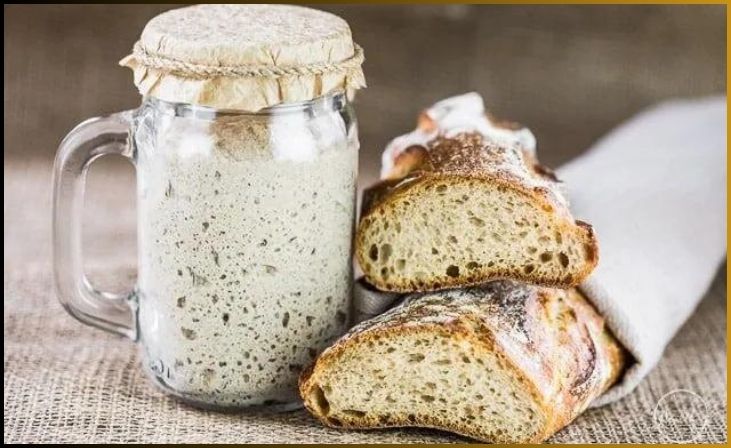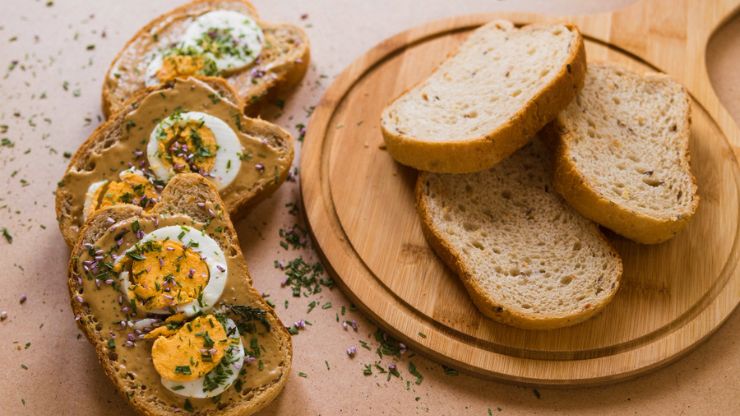Creating the perfect loaf of artisanal sourdough bread is an art, and at the heart of this culinary masterpiece lies the unsung hero – the healthy sourdough starter. In this blog, we’ll delve into the fascinating world of sourdough starters and uncover their vital role in crafting that coveted tangy flavor, chewy crust, and airy crumb that characterizes artisanal bread.
Sourdough starters are not just a mixture of flour and water; they are living cultures, capturing wild yeast and lactic acid bacteria from the environment. These microorganisms, when nurtured and maintained correctly, give rise to a thriving starter that can work wonders in your bread-baking endeavors.
Join us on a journey of discovery, as we explore the creation, maintenance, and use of a healthy sourdough starter. We’ll learn how to identify the telltale signs of a vibrant starter and troubleshoot any challenges that may arise. With this knowledge, you’ll be well on your way to mastering the art of artisanal bread, one loaf at a time.
Table of Contents
ToggleThe Importance of a Healthy Sourdough Starter

A healthy sourdough starter is the cornerstone of exceptional breadmaking, and its importance cannot be overstated. This living culture of wild yeast and beneficial bacteria is the engine that drives the fermentation process in sourdough bread. Here’s why a healthy sourdough starter is crucial:
- Distinct Flavor: A well-maintained starter imparts the signature tangy and complex flavor to sourdough bread that distinguishes it from ordinary loaves. It adds depth and character to your baking.
- Better Digestibility: The long fermentation process in sourdough bread predigests gluten and phytic acid, making it easier to digest for many people, even those with mild gluten sensitivities.
- Improved Nutritional Profile: Sourdough fermentation enhances the bioavailability of nutrients in the flour, making it a more nutritious choice. It also reduces the bread’s glycemic index.
- Natural Leavening: A healthy starter provides natural leavening, allowing bread to rise without the need for commercial yeast. This creates a light and airy crumb.
- Resilience: A robust starter is more resistant to spoilage, which means it can be stored for extended periods without losing its vitality.
Also Read- Plain ‘Ole, Basic Sourdough Bread
Ingredients Needed for a Sourdough Starter
Creating a sourdough starter is a simple yet transformative process, and it begins with just two basic ingredients:
Don't just scroll, subscribe!
BuzzTrail's unique web-stories are the cure for boredom you've been waiting for.
- Flour: High-quality flour is the primary ingredient for your sourdough starter. Opt for unbleached, all-purpose, whole wheat, or rye flour. Each type of flour can yield a starter with distinct characteristics, so your choice depends on your preference.
- Water: Pure, chlorine-free water is essential. Chlorinated water can hinder the growth of the beneficial microorganisms in your starter. You can use tap water if you leave it out for a day to allow the chlorine to evaporate, or you can use filtered or bottled water to ensure a clean environment for your starter.
Creating Your Sourdough Starter
Creating your sourdough starter is an exciting and rewarding process that will lay the foundation for your artisanal breadmaking journey. Here’s a step-by-step guide to get you started:
Ingredients and Tools:
- Unbleached flour (all-purpose, whole wheat, or rye)
- Non-chlorinated water
- A glass or plastic container
- A kitchen scale
- A clean cloth or plastic wrap
Step 1: Day 1 – Mixing the Initial Starter
- Weigh out equal parts of flour and water. For example, use 100 grams of each.
- Combine the flour and water in your container and stir until it forms a thick, consistent paste.
- Cover the container with a clean cloth or plastic wrap and leave it at room temperature (around 70°F or 21°C) for 24 hours.
Step 2: Days 2-7 – Daily Feeding
- Check your starter daily. You should start seeing small bubbles and a slightly sour smell.
- Discard half of the starter (or about half, to avoid waste) and add equal parts of flour and water to the remaining starter. For instance, if you have 100 grams of starter, add 50 grams of flour and 50 grams of water. Stir well.
- Cover and let it sit at room temperature.
Step 3: Day 7 – A Mature Starter
- By day 7, your starter should be vigorous, with a bubbly and frothy appearance.
- It’s now ready to use in your sourdough bread recipes or can be stored in the refrigerator for future use.
Signs of a Healthy Sourdough Starter
Recognizing the signs of a healthy sourdough starter is a fundamental skill for any sourdough baker. These indicators tell you that your starter is active, robust, and ready to produce delicious bread. Here are the key signs to look for:
- Bubbles: A healthy starter should have numerous bubbles on its surface, especially a few hours after feeding. These bubbles indicate that the yeast is producing carbon dioxide, causing the starter to rise.
- Rise: After feeding, your starter should visibly increase in volume, often doubling or more. This rise demonstrates the leavening power of your starter.
- Texture: A well-maintained starter should have a thick, viscous consistency with a slightly sticky or tacky feel. It should be easy to scoop and mix.
- Aroma: Your starter should have a pleasant, slightly sour, and tangy smell. This aroma is a sign that the beneficial bacteria are active.
- Consistency: The starter’s behavior should be consistent. It should rise and fall predictably after feedings, indicating that it’s stable and strong.
- pH: A healthy starter typically has a pH level that is slightly acidic, which contributes to its unique flavor.
For More- Cheesy Whole-Wheat Sourdough Bread
Conclusion
In the delightful world of artisanal breadmaking, a healthy sourdough starter is undeniably the heart of it all. It’s the magical ingredient that imparts the unique tangy flavor, chewy crust, and airy crumb to your homemade loaves. With the knowledge of creating, maintaining, and recognizing a healthy starter, you’re well on your way to mastering the art of sourdough bread.
The benefits of a healthy sourdough starter go beyond taste and texture. It offers better digestibility, improved nutritional value, and a natural leavening process that sets it apart from conventional bread. Your journey with sourdough baking promises to be rewarding, whether you’re an experienced baker or just starting.
So, embrace the age-old tradition of sourdough breadmaking, experiment with different flours, and enjoy the satisfaction of creating your own artisanal bread from scratch. With a thriving sourdough starter as your ally, the possibilities are endless.
FAQs
What’s the difference between a sourdough starter and commercial yeast?
What’s the difference between a sourdough starter and commercial yeast?
A sourdough starter is a natural leaven created from wild yeast and bacteria, while commercial yeast is a cultivated strain.
How often should I feed my sourdough starter?
How often should I feed my sourdough starter?
It’s typically recommended to feed your starter at least once every 24 hours at room temperature or refrigerate it and feed it weekly.
Can I use gluten-free flour to create a sourdough starter?
Can I use gluten-free flour to create a sourdough starter?
Yes, you can use gluten-free flour to make a gluten-free sourdough starter.
What’s the best flour for a sourdough starter?
What’s the best flour for a sourdough starter?
Unbleached, organic, and high-quality flours, like all-purpose or bread flour, work well for creating a starter.

